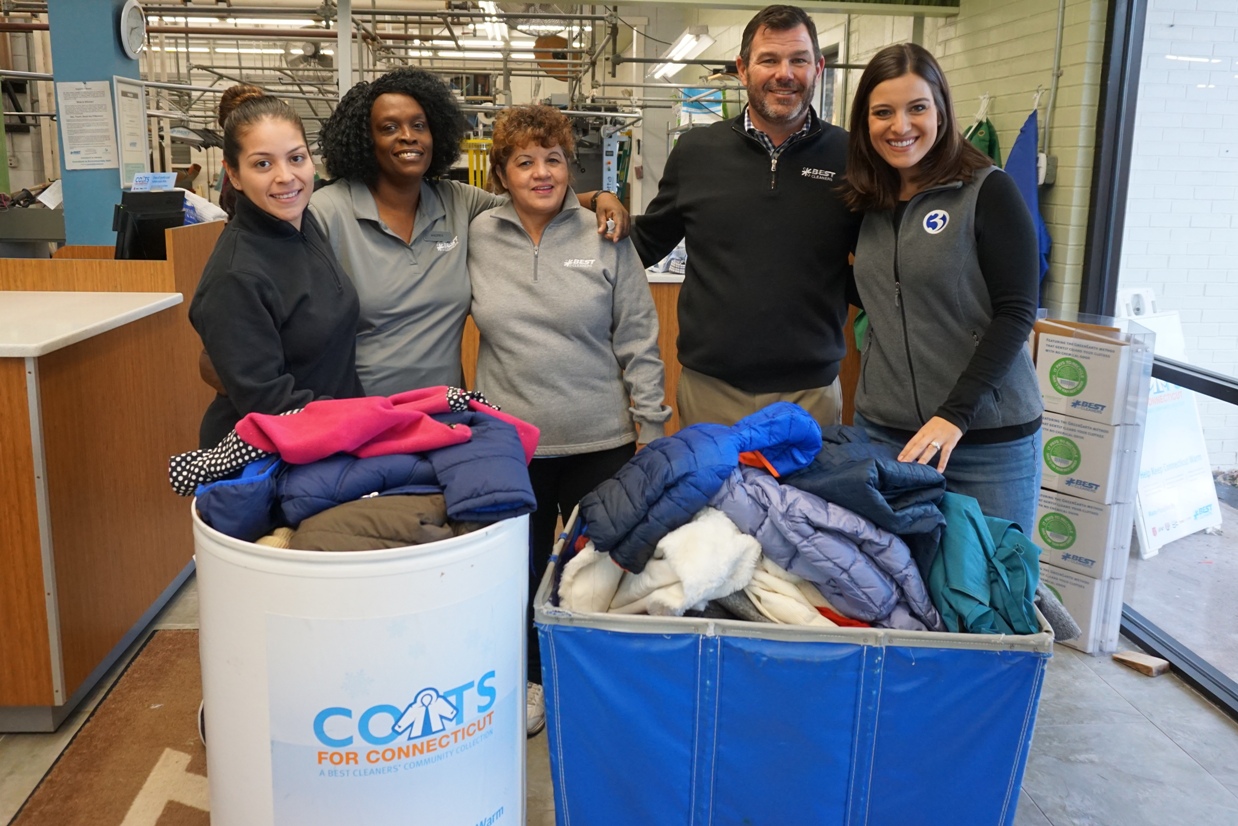GUIDE FOR THE BEST OUTERWEAR CARE
The first rule to cleaning coats and jackets, and prolonging their life, is to always read and follow the care label found inside the garment. The recommended cleaning process will vary based on the type of fabric, materials, and construction. For instance, not all down jackets are created equal. The Canada Goose brand requires dry cleaning of their down-insulated coats – machine washing voids its warranty. However, other brands of down coats, when done properly, can be safely machine washed and dried.
Here’s a quick overview of the recommended frequency and process for cleaning various types of outerwear. Remember, when in doubt, ask your professional cleaner.
 Down Coat: Depending on the care label recommendation, dry clean or machine wash twice during a season if worn regularly, once if worn infrequently.
Down Coat: Depending on the care label recommendation, dry clean or machine wash twice during a season if worn regularly, once if worn infrequently.
Leather Jacket: Since leather cannot be exposed to water, it requires specialty cleaning at least once each season, or twice if it is worn often.
Wool Coat: Dry cleaning is recommended for wool as well as for coats with embellishments. Cleaning at least once (at end of season) or twice, if worn regularly, will keep it looking like new.
Fleece Jacket: Wash fleece outerwear after six or seven wears. To keep the nap smooth, soft, and pill-free, be sure to turn the garment inside out, wash with like colors and without linty items like towels. Rinse twice, so there’s no detergent residue, and air-dry. If the fleece has a water-resistant finish, avoid fabric softeners and dryer sheets, as they diminish the effectiveness of the fabric.
Rain Jacket: Today’s rain gear features advanced technology fabrics. It requires more frequent cleaning than cold weather gear, but can lose its water repellency and breathability if washed too often. Twice a month if worn often, once a month if infrequently, is recommended. You should also use a durable water-repellent finish to ensure the jacket’s waterproof coating continues to do its job.
OFF SEASON STORAGE
Before storing your coat or jacket at the end of the season make sure it is clean. There may be traces of dirt and stains that are not visible and, if left on a garment, can become a feeding ground for moths that are attracted to perfume and food odors. Play it safe and avoid pesky moth holes by freshly cleaning your coats and jackets before their off-season hibernation.
 Other “must dos” for ensuring your outerwear is in tip-top shape for the following season includes emptying all pockets, zipping up zippers, buttoning up buttons, and snapping all snaps. Doing so will help maintain the original shape. You also want to allow for breathing room, especially for leather or down pieces, when choosing storage materials. For this reason, do not use plastic garment bags. Fabric storage bags are the better choice, while plastic bins are okay to use as well as long as you don’t store too many items in one bin.
Other “must dos” for ensuring your outerwear is in tip-top shape for the following season includes emptying all pockets, zipping up zippers, buttoning up buttons, and snapping all snaps. Doing so will help maintain the original shape. You also want to allow for breathing room, especially for leather or down pieces, when choosing storage materials. For this reason, do not use plastic garment bags. Fabric storage bags are the better choice, while plastic bins are okay to use as well as long as you don’t store too many items in one bin.
These maintenance cleaning and storage guidelines will help keep your outerwear looking its best for years to come. For any special circumstances, consult your cleaning professional for expert advice and proper care.







